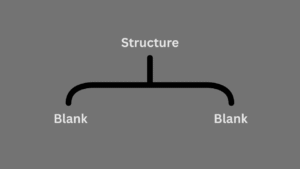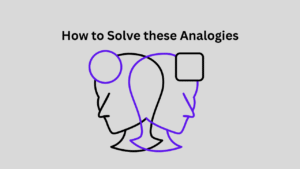Have you ever stumbled upon the phrase, “Blank is to Blank as Blank is to Blank” and found yourself momentarily puzzled? You’re not alone. This format is deeply ingrained in our education, logic puzzles, and even daily communication. At first glance, it might seem like a quirky play on words, but there’s far more beneath the surface. This seemingly simple structure plays a critical role in how we understand relationships, draw parallels, and even make decisions.
I still remember sitting in a classroom during a college aptitude test. One question went, “Wing is to Bird as Fin is to ____?” As simple as it was, it made me think harder than expected. That was the day I truly realized the brilliance of analogical thinking. This article aims to fully explore the depth of this analogy format, why it’s important, and how mastering it can enhance your critical thinking, communication skills, and creativity.
Understanding the Structure

The structure “A is to B as C is to D” (or in its general form: Blank is to Blank as Blank is to Blank) represents a proportional analogy. This isn’t just some academic mumbo jumbo—it’s how we naturally compare and understand the world.
Let’s break it down:
- “A is to B” forms the first pair.
- “C is to D” forms the second pair.
- The relationship between A and B should mirror the relationship between C and D.
This structure is rooted in pattern recognition and logical consistency. For example, consider:
- Wheel is to Car as Leg is to Human. The analogy draws a functional parallel—wheels move cars, and legs move humans.
In essence, analogies help us understand relationships and often serve as bridges to connect unfamiliar ideas using familiar concepts.
Where You’ll See This Format Used
1. Standardized Testing
This analogy format is widely used in tests like the SAT, GRE, and IQ exams. These tests don’t just assess knowledge; they assess the ability to think logically. Mastering analogies often means mastering these assessments.
2. Language Learning
Analogies help language learners comprehend new vocabulary. For instance, knowing “generous is to giving” helps understand “selfish is to hoarding.”
3. Philosophy and Theory
Philosophers often use analogies to make abstract ideas more understandable. For example, Plato’s Allegory of the Cave is a giant analogy about perception and reality.
4. Marketing and Branding
Marketers use analogies to simplify messages. Example: “Uber is to taxis as Airbnb is to hotels.” This not only explains the concept but also positions the brand innovatively.
5. Educational Tools and Puzzles
Teachers use analogies to enhance classroom learning. They’re also the basis of many fun puzzles and brain teasers.
Common Types of Analogies

To master analogies, you need to recognize the type of relationship at play. Here are some of the most common:
1. Synonym Analogies
Example: Happy is to Joyful as Sad is to Depressed. These analogies highlight similarity in meaning.
2. Antonym Analogies
Example: Hot is to Cold as Love is to Hate. This format shows opposites.
3. Part to Whole Analogies
Example: Petal is to Flower as Tire is to Car. A petal is a part of a flower, just as a tire is a part of a car.
4. Cause and Effect Analogies
Example: Fire is to Burn as Ice is to Freeze. These draw relationships based on results or effects.
5. Function Analogies
Example: Pen is to Write as Knife is to Cut. These show what a tool or object is used for.
6. Degree of Intensity Analogies
Example: Warm is to Hot as Breeze is to Hurricane. These show a scale or gradient.
7. Category Analogies
Example: Eagle is to Bird as Whale is to Mammal. Each belongs to a larger classification.
8. Tool and User Analogies
Example: Hammer is to Carpenter as Stethoscope is to Doctor. These demonstrate the relationship between a professional and their tools.
Examples in Everyday Use
Analogies are everywhere in our day-to-day lives, often in places we don’t consciously notice.
- Social Media: People love clever comparisons. Example: “Netflix is to chill as books are to relax.”
- Branding: “Spotify is to music what YouTube is to video.”
- Quotes: Albert Einstein said, “Life is like riding a bicycle. To keep your balance, you must keep moving.” That’s an analogy!
- Memes: Humorous content often relies on analogy to draw funny, exaggerated comparisons.
In fact, when we explain something new to someone, we instinctively turn to analogy. It’s how we transfer knowledge.
How to Solve These Analogies

Let’s turn the tables now. How do YOU solve these analogies when you encounter them?
Step-by-Step Strategy:
- Identify the Relationship: What’s the connection between the first pair?
- Mirror It: Try to apply the same logic to the second pair.
- Eliminate Mismatches: If it’s a multiple-choice question, eliminate answer pairs that don’t reflect the same relationship.
- Test Your Choice: Swap the positions and re-check if the relationship still holds.
Example:
Bread is to Baker as Book is to?
- Author
- Library
- Reader
Answer: Author. Why? A baker makes bread; an author makes a book.
Tips:
- Focus on the strongest relationship first.
- Watch out for false synonyms or opposites.
- Use your real-life experience to relate the terms.
Creating Your Own Analogies
Why just solve analogies when you can create them?
Crafting your own analogies helps in:
- Boosting creativity
- Clarifying complex ideas
- Improving communication
Framework to Create Analogies:
- Choose two familiar items (e.g., Coffee and Energy)
- Identify the relationship (Cause and Effect)
- Find a parallel pair (e.g., Sleep and Restfulness)
Now form your analogy: Coffee is to Energy as Sleep is to Restfulness.
Try These for Practice:
- Guitar is to Music as Brush is to ________ (Answer: Art)
- Seed is to Tree as Egg is to ________ (Answer: Bird)
This practice makes your thinking sharper, your communication more engaging, and your ideas more relatable.
You may love this one: 15 Creative Alternatives to “Stay Tuned”
Why Analogies Matter in Communication
Analogies are powerful tools in speaking and writing. They:
- Make abstract concepts tangible
- Simplify technical explanations
- Strengthen persuasion in arguments
Examples in Speeches:
- Martin Luther King Jr.: “Justice rolls down like waters…”
- Steve Jobs: Called computers “bicycles for the mind.”
These aren’t just poetic—they’re memorable.
In business, analogies help pitch ideas: “Our app is to productivity what a GPS is to navigation.”
Clear. Direct. Impactful.
Common Mistakes and Misinterpretations
1. Forced Analogies
Some people try too hard and force comparisons that don’t make sense.
2. Confusing Causation and Correlation
Just because two things appear linked doesn’t mean they share the same cause.
3. Overlooking Context
Words may have multiple meanings. Example: “Light” (as in weight vs. brightness).
Always ensure the context is aligned across all four parts.
Practice Questions and Exercises
Let’s do some real-time analogical thinking:
1. Leaf is to Tree as Finger is to?
- Hand
- Glove
- Nail
Answer: Hand
2. Bark is to Dog as Roar is to?
- Tiger
- Wind
- Engine
Answer: Tiger
3. Key is to Lock as Password is to?
- Screen
- User
- Account
Answer: Account
Challenge: Create your own 3 analogies and share with friends. Make it a fun game!
Conclusion
“Blank is to Blank as Blank is to Blank” isn’t just a puzzling phrase—it’s a gateway to understanding how we perceive, learn, and explain. From test rooms to tweets, from classroom lectures to boardroom pitches, analogies shape our thinking and our expression.
As you move forward, take note of how often you use analogies in conversation. Practice creating them. Play with them. Whether you’re a student, professional, educator, or just someone who enjoys a mental challenge, analogical thinking will serve as a secret weapon in your intellectual arsenal.
And remember: Just as a good analogy brings clarity to chaos, your ability to think in analogies is to your brain as exercise is to your body—essential, enlightening, and endlessly rewarding.
Deven Kumar is the passionate writer and founder behind povforbook.com, a website dedicated to exploring unique perspectives in literature and storytelling. With a deep love for books, language and traveling, Deven aims to inspire readers by sharing insightful reviews, thought-provoking synopses, Guiding tourist by sharing personal experience and engaging content that highlights the power of narrative. When not writing, Deven enjoys connecting with fellow book lovers and traveling lovers and continuously discovering new voices in the literary world.
